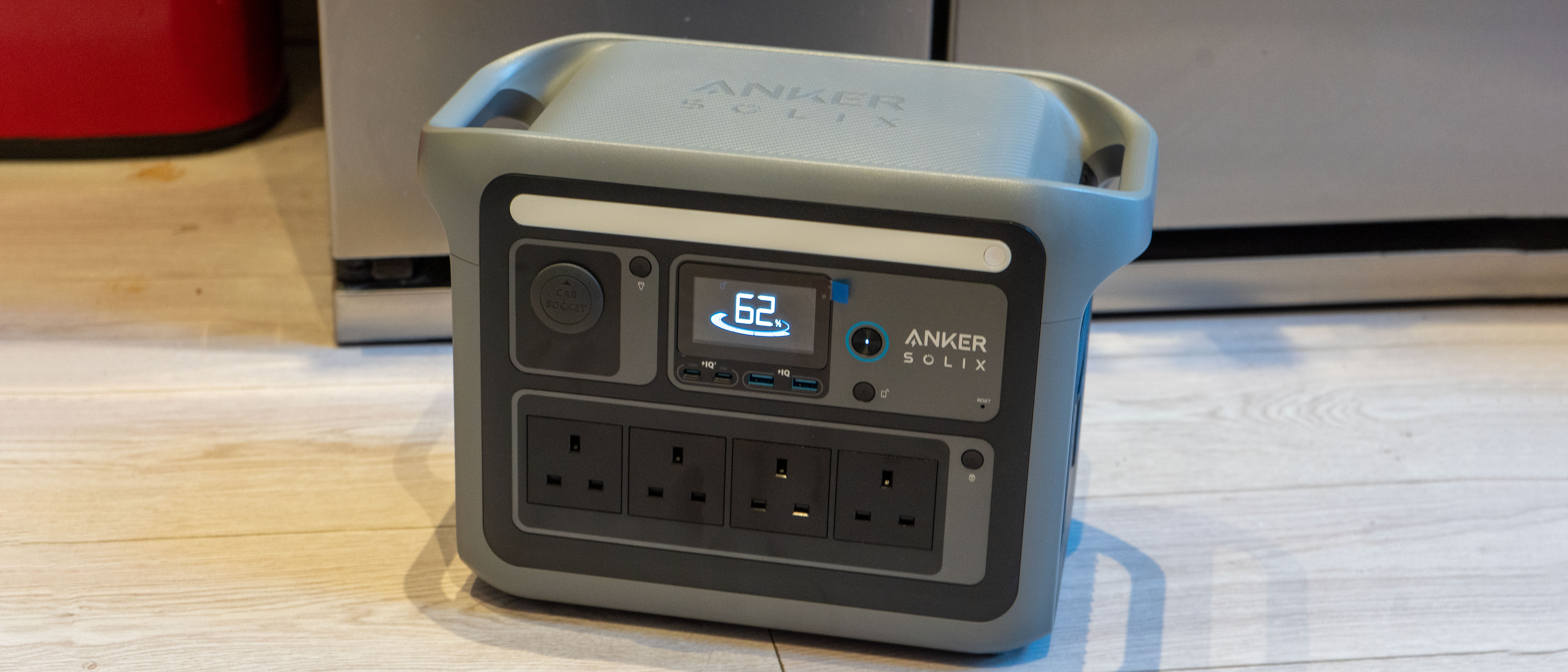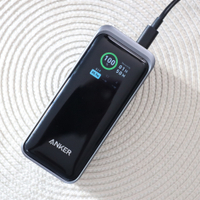Digital Camera World Verdict
Without complaining about the physics of battery tech, there is very little I can say about this device that isn't positive. It's not a cheap investment, but it's generously equipped and it can help out in off-grid camping, remote device charging, and if you live somewhere you can't trust the power grid.
Pros
- +
More AC sockets than most power bricks
- +
UPS (uninterruptible power supply) mode
- +
Beautifully designed study housing
- +
Integrated LED lamp
Cons
- -
A bit heavy to move a long way
Why you can trust Digital Camera World
Gone are the times when an extra battery pack was something a heavy user might have to top up their phone. OK, not gone – far from it – but power banks are now available in a much greater range of capacities, some of which can bring electricity on the road (and off it).
Capacity:
1,056Wh (upgradeable to 1800Wh)
Power Output:
USB-A: 2x 30W
USB-C: 2x 100W
12V: 1x
AC: USA: 6x 120V / UK: 4x 240V
Chinese company Anker makes some of the best compact power banks, and it has cheerfully innovated into larger capacity devices which are also capable of acting as the hub of a small solar farm – a solar generator. (Anker, incidentally, is closely related to security camera company Eufy, another brand which has impressed us over the last 12 months (not least with its solar-charged security cameras, so we know they have the expertise.)
So, the Solix C1000 can store 1,056 watt-hours and deliver it through USB-C or USB-A sockets (as you'd expect with any power bank), a car-style 12V socket, and in-built inverter to provide AC power through 4 mains sockets (these are supplied to match the market you buy the device in – I'm testing in the UK, so they are three-pin). The device also has sockets for input from AC electricity – including a high-speed charging option – and solar panels.
If you work off grid and the noise of a gas (petrol) generator (as well as the long-term environmental shame) is an issue, then a battery power station seems a logical upgrade. Together the device offers an alternative to a fuel-powered generator which (especially with solar charging) is far more sustainable, not to mention quieter. The question is, is this the right choice for charging your gear (especially cameras and drones) on the go?

Anker Solix C1000: Build and handling
One thing we're all learning is that battery technology isn't lightweight. The C1000 is no exception to that rule, weighing in at nearly 12.9kg (nearly 29 pounds) it's something you'll want to carry in a car or RV. That said, you can also move it around the home easily enough – in that regard, it's a good balance. While I was testing it, I had a power cut, I had no trouble carrying it to my fridge-freezer and plugging it in, but I wouldn't want to carry it with me to a remote camping location.
In terms of build, the device looks like a smart version of an old desktop computer; there is a hint of the PowerMac G4 in the handle design – no bad thing. The design's arrangement is supremely logical, with all the power output on what we'll call the 'front' next to a clear display of the remaining power which also delivers an estimate of hours remaining at the (forgive the pun) current load.
The quality is high-end too. The plastics are convincing, with a pleasing texture applied to the top and nice detailing with a consistent electric blue on the vents and switches.
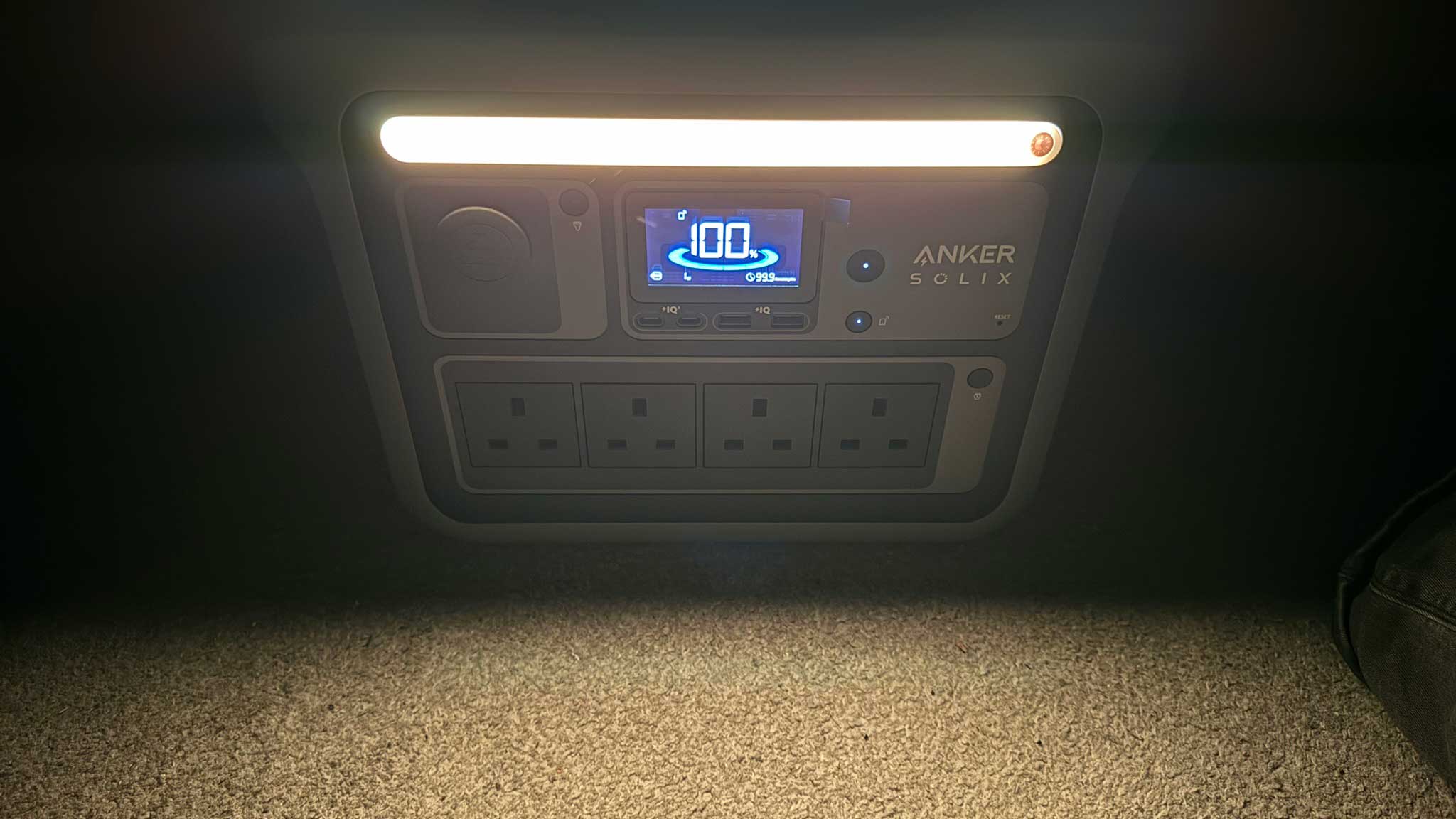
The sockets are reasonably powerful too; up to 30W a piece for the USB-A, 100W for the USB-C and the 12V socket can handle the load of traditional camping gear like a 12V fridge. The AC outlets (4 x 240V in the UK, 6 x 120V in the USA) are very useful, and four/six is more generous than many equivalent devices. The outlets have a single switch at their top-right, so you can disable the whole cluster if you choose. Similarly, the 12V can be switched off without unplugging.
If a display isn't enough, you can also have the information relayed to your phone via Bluetooth or wi-fi; this is also the means of reaching some of the more obscure control features (and the option to throw caution to the wind when it comes to charging speed).
At the end to the left of the outputs is the side with the inputs. These are a standard 3-pin socket for the mains and a smaller solar-panel socket. At the opposite end is a cover for a socket which can attach to an extended battery. The remainder of the space at these ends is consumed with vents (there are fans inside to prevent the batteries from getting over-warm).
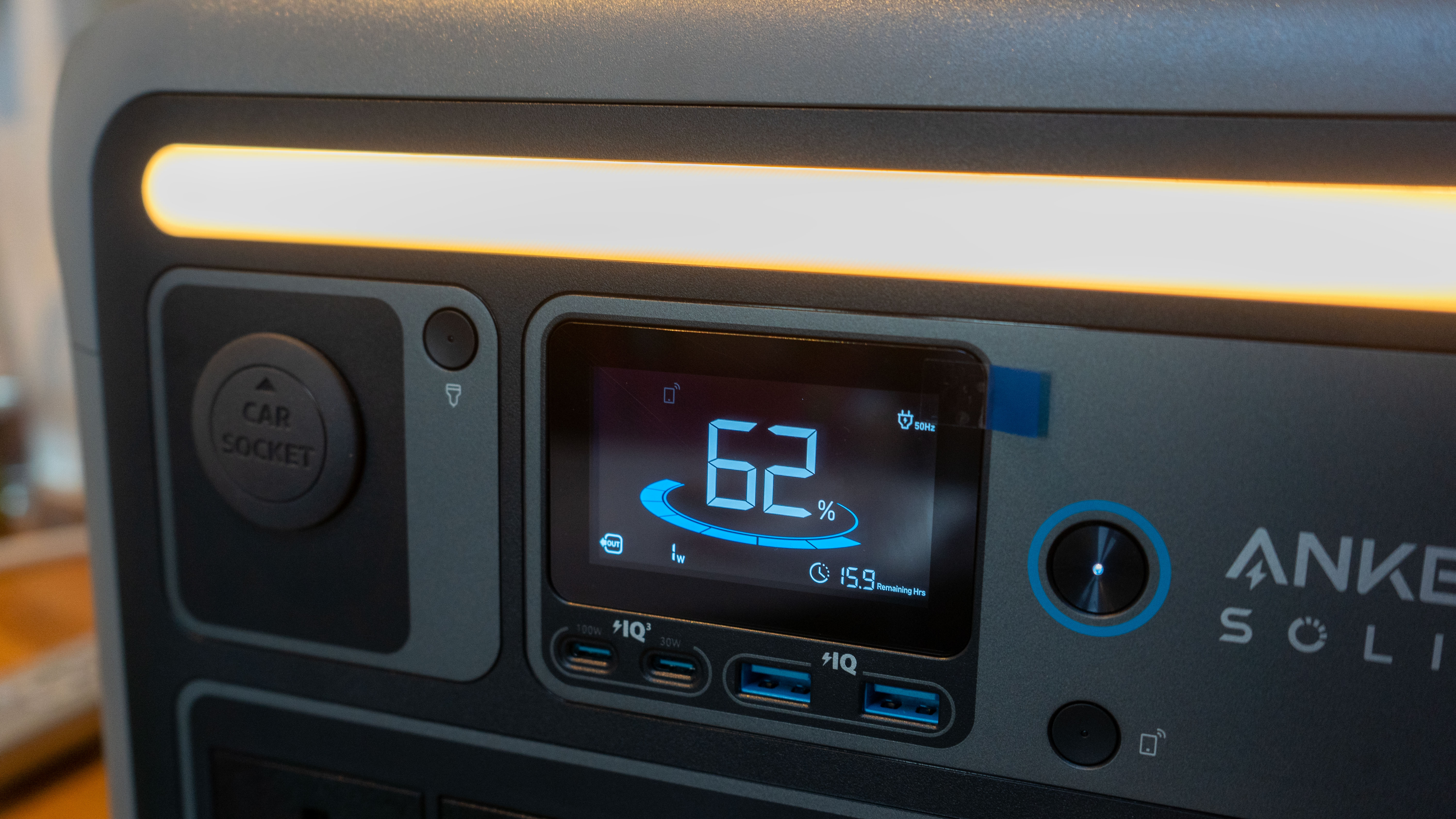
Anker Solix C1000: Performance
In terms of power, the beast of a brick can deliver 1,800 watts of continuous power. Atop that, the system has a trick for handling devices with motors or heating elements that draw a lot more power as they get going – it has a 'Surge Pad' which can nudge the wattage up to 2,400W by allowing the voltage to dip slightly.
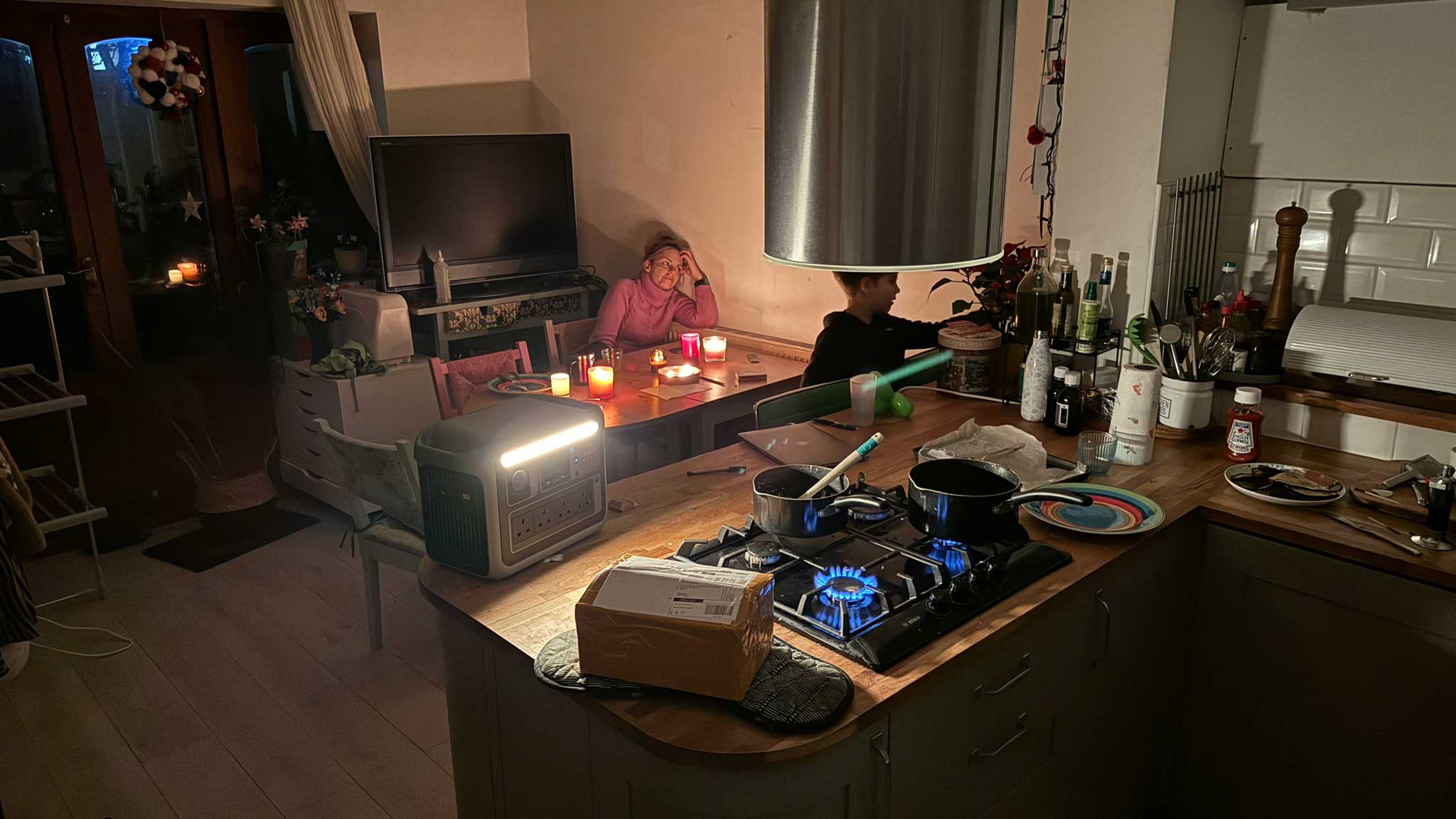
When it comes to capacity, the 1,056Wh is already a big win since the device arguably competes with a lot of devices which are nearly, but not quite, 1,000Wh (just as the Pioneer 500 we looked at was 461Wh).
The rapid-charging feature, called 'HyperFlash', allows charging via AC input from 0-100% in, Anker says, 58 minutes and I was able to get something very close to this. That said, this feature is disabled by default and I'd suggest leaving it this way. The battery charges reasonably swiftly without pushing it to a point which is likely to reduce the promised 3,000-cycle battery life.
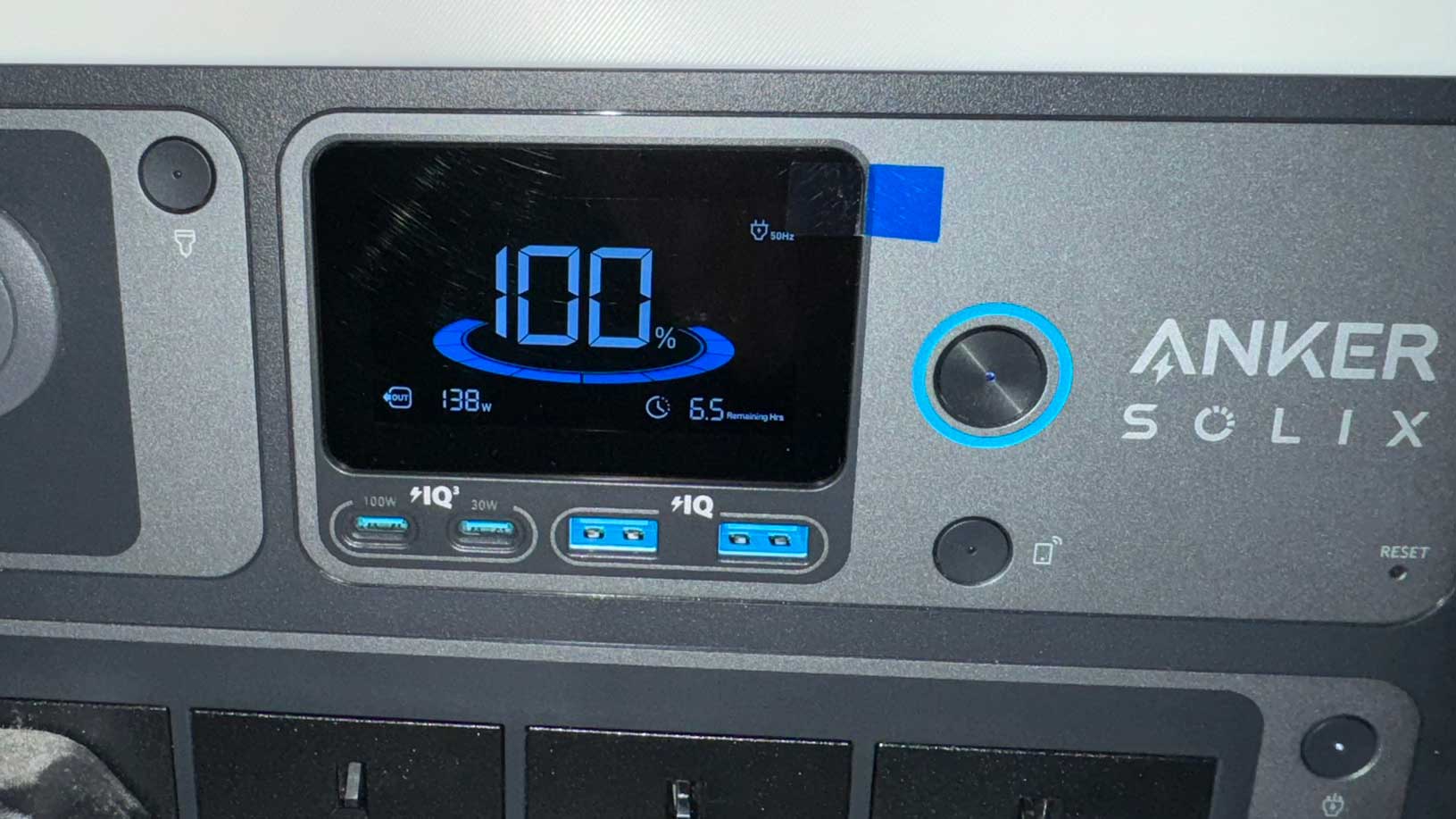
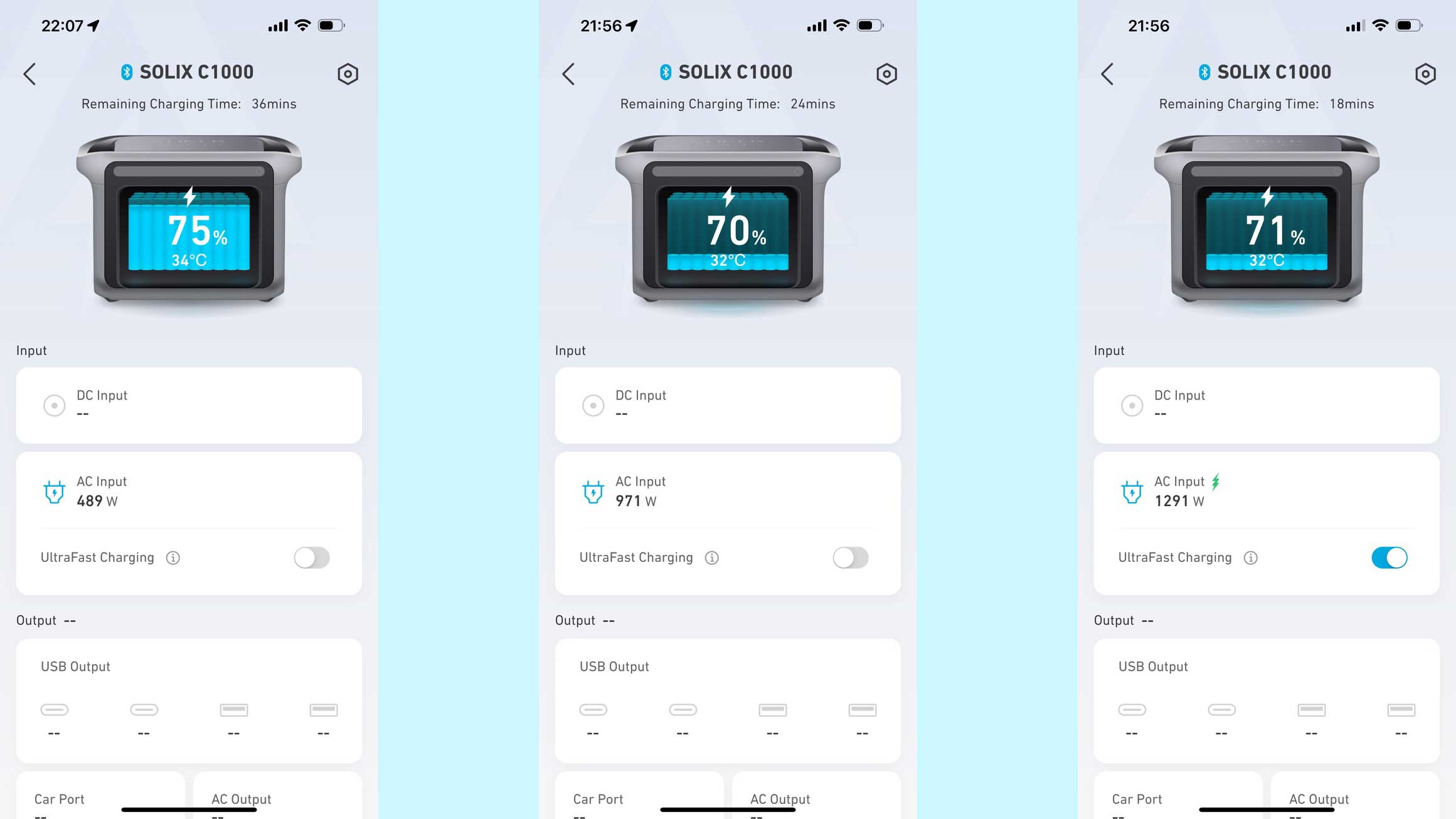
I did find that, with some of my devices that don't draw a great deal of power, I wasn't always sure that the brick was detecting and charging them. It was good to get confirmation that it was (and that they simply didn't want much power) using the app. This didn't make life easy for the 'how long will the battery last', but as a guide, the number of hours didn't seem too far.
I mentioned that, soon after I received the device for testing I had a power cut and chose to use it to keep the fridge running? Did Anker damage the local substation so I'd realize how good the C1000 was? – probably not! But it did the trick. My large home fridge freezer was kept running all night – we didn't even turn off the ice-maker.
Having something like this around the home as a backup seems very appealing though obviously with a thermostatic device like a freezer the current draw will vary, which can't make life easy for the remaining power time estimator. On the plus side, there is always the app to check in on things.

Anker Solix C1000: Overall Verdict
Anker has thought of everything with the Solix C1000 – and implemented it well, for a competitive price. The battery slightly beats the 1KWh category in capacity, has a better array of connectivity than most, and yet still offers the option of extending it with another kilowatt hour of power.
The fact you get four AC sockets, four USB sockets (two of each), and a 12V means it's pretty difficult not to be able to use this device, and for plenty of scenarios, it's all you'll need. Expandability is a great touch with the extra battery block, and the fact it'll work as an uninterruptible power supply (and did so in my pulling-power-from-wall test) to boot makes it supremely versatile.
The rapid-charging feature, called 'HyperFlash' is enabled via the app, which (given it's pretty fast anyway) I think shows a brilliant balance of responsibility and flexibility. That brilliance is repeated across the design, in build quality, and (at least in my testing) performance.
Should you buy the Anker Solix C1000
✅ Buy this if...
- You want a power bank for off-grid living or camping
- You want an uninterruptible power supply for your home office
- You like to be prepared for anything
- You want to run a small solar farm
🚫 Don't buy this if...
- You need a small portable device to top up a phone only
Alternatives
If you only need power for a couple of small devices out and about, then the C1000 might be overkill. Anker's more pocket-sized Anker Prime 20,000mAh Power Bank manages to tuck in a detailed display that shows charge level in both percentage and minutes. Handy!
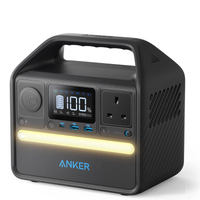
The Anker PowerHouse 521 is a smaller version of the C1000, although obviously with that, can't keep up with the maximum capacities or output. But if space is tight, or you don't have huge amounts of equipment to power, then this might be a more convenient option.
How I tested the Anker Solix C1000
I tested the battery by keeping it for several weeks and using it to charge a number of devices with a variety of power consumption levels. To test the device with low-power charging devices, I used Sony Playstation controllers, while I also charged my DJI Mini 3 Drone (using the charging hub), my Sony camera, my MacBook Pro, and assorted other gadgets.
I was also 'lucky' enough to have a power cut (to be fair it was not long after I'd charged the battery, which forced me to test the device on my fridge freezer). For my final test, I'll be connecting to an EV 'granny charger' (a charger designed for charging an electric car from a normal mains socket). This allows me to monitor the load to ensure the delivery is as fast as promised.

With over 20 years of expertise as a tech journalist, Adam brings a wealth of knowledge across a vast number of product categories, including timelapse cameras, home security cameras, NVR cameras, photography books, webcams, 3D printers and 3D scanners, borescopes, radar detectors… and, above all, drones.
Adam is our resident expert on all aspects of camera drones and drone photography, from buying guides on the best choices for aerial photographers of all ability levels to the latest rules and regulations on piloting drones.
He is the author of a number of books including The Complete Guide to Drones, The Smart Smart Home Handbook, 101 Tips for DSLR Video and The Drone Pilot's Handbook.

